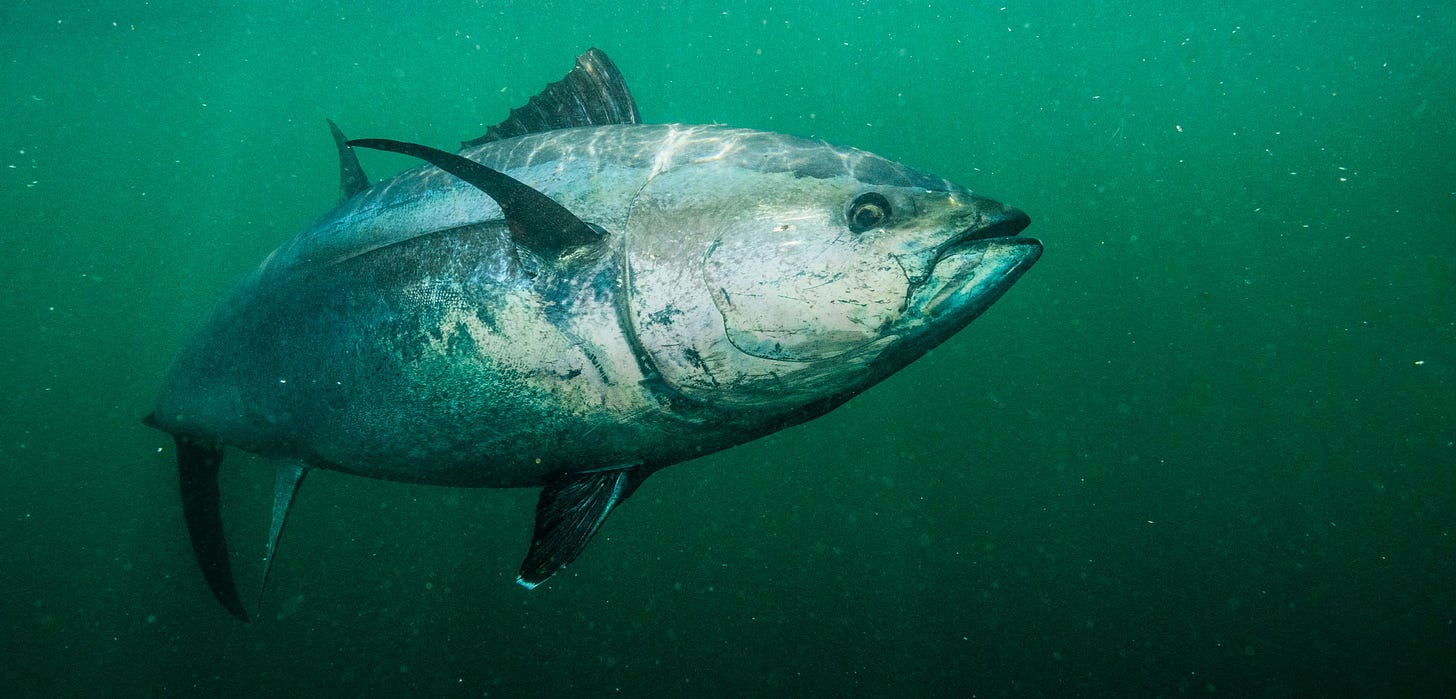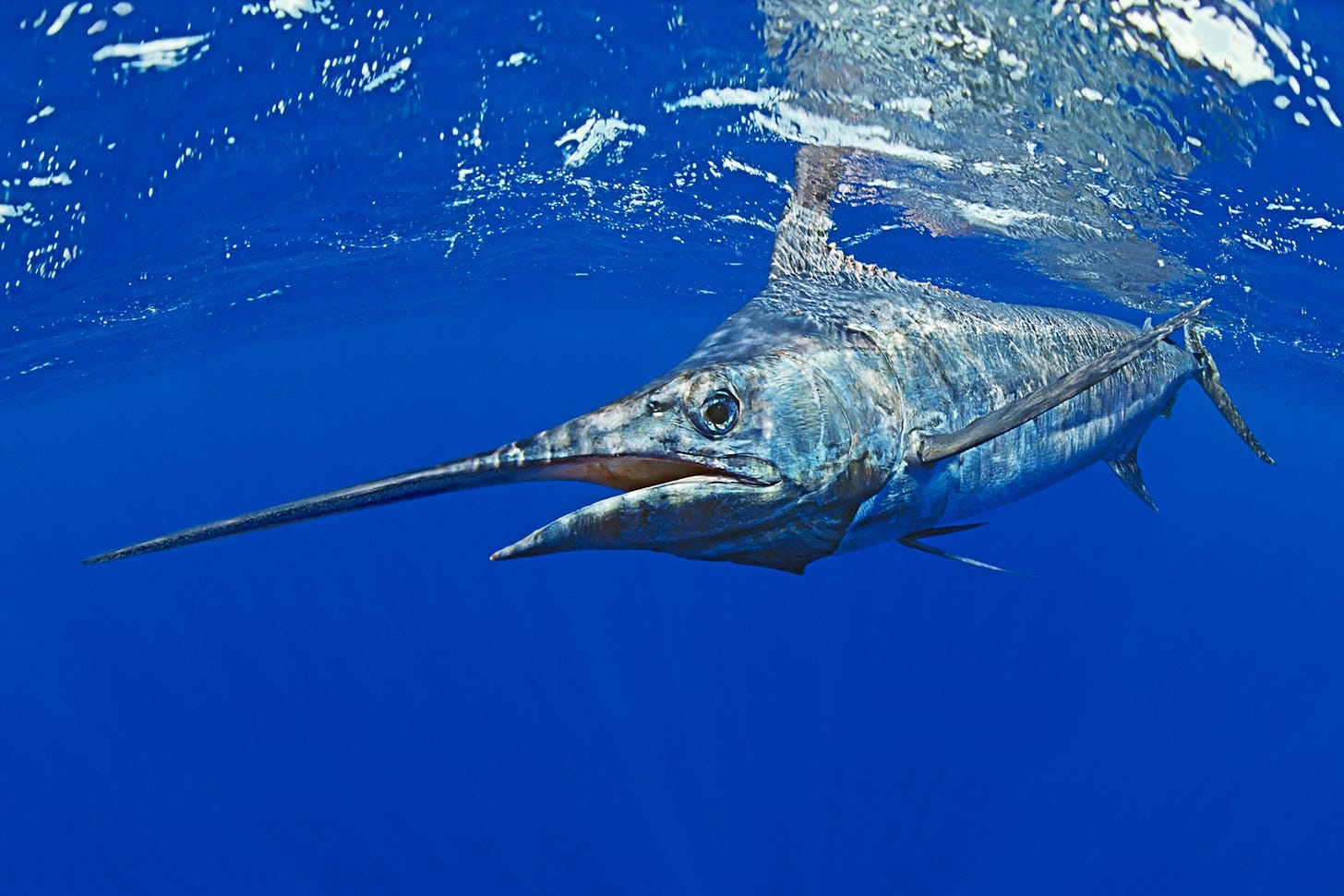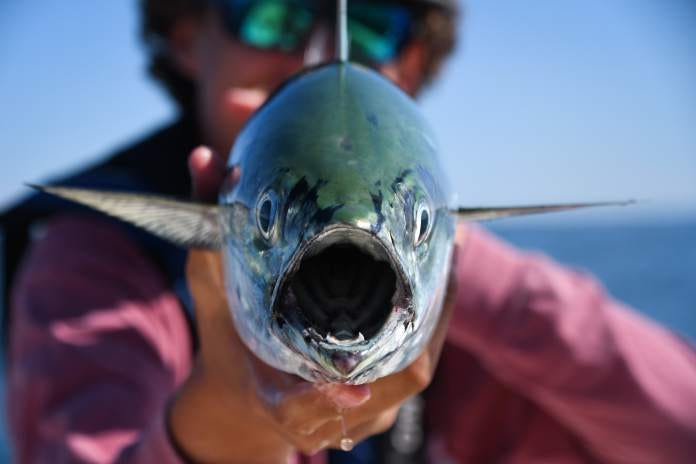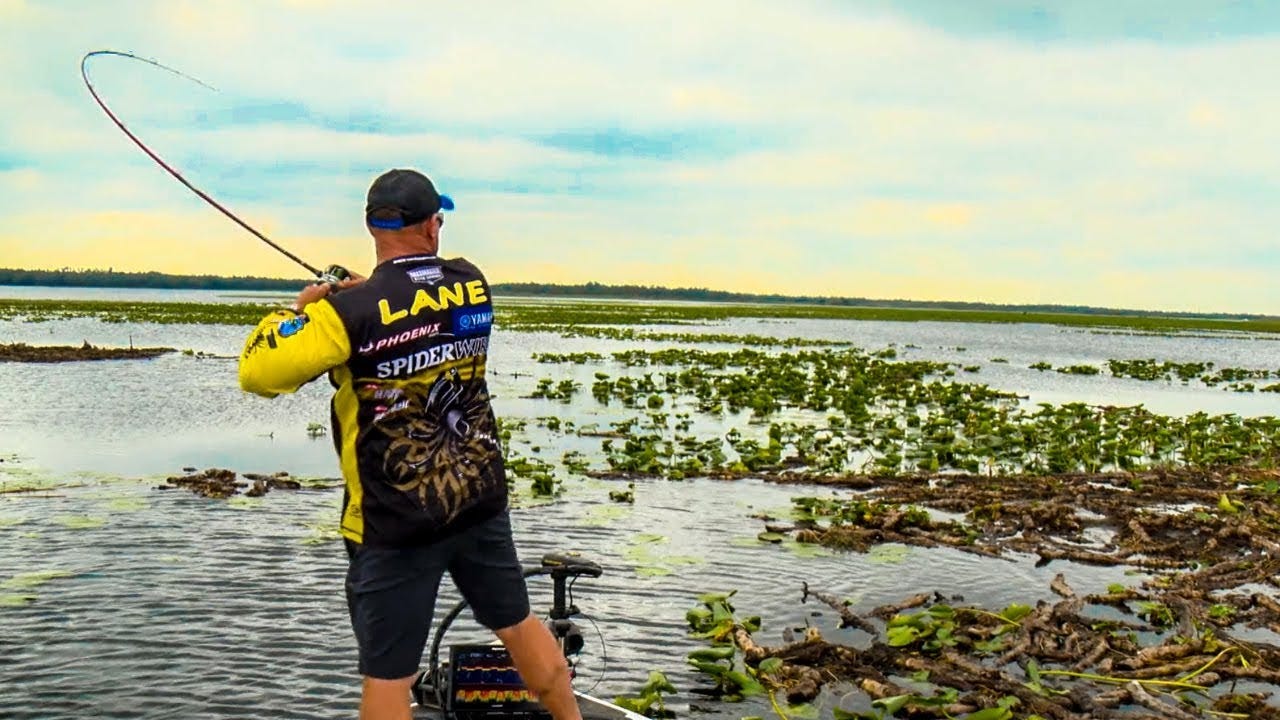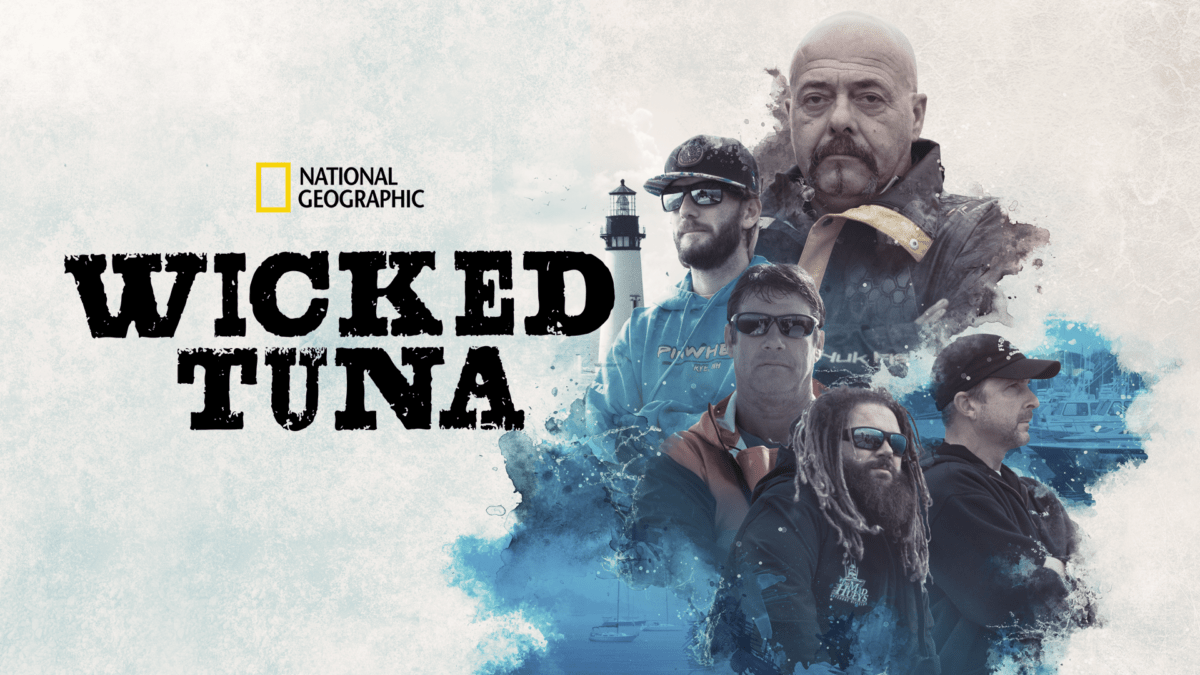The maritime rule of salvage has its origin in Roman law, which dictates that one who preserves or improves upon the misplaced property of another is owed compensation, even if the service was not requested. Let’s get out the internet trawler and get to work…
🎙️| Cut & Retie Podcast - Break Out the Jaws of Midlife —> "Boys, oh boys! I think he’s come back for his noon feeding…"A long overdue celebration of the greatest shark film of all-time…from the angling point-of-view.
🎥 | Tuna Junkies - Jigging The Cape —> Pure and unfiltered footage from the NJ crews’ mission up north earlier this Summer. Next time fellas, wanna leave some for the rest of us after you’re done?
Nomad’s The Odyssey Series - Coral Sea Wahoos —> High-speed trolling tactics at their finest in one of the world’s most prolific sport-fishing destinations.
Reports | OnTheWater / FishermanMag / SaltyCape / HullTruth / StripersOnline
When Marlin are in the Mix: After our recent mid-season recap, we got a bit more in the weeds with Capt. Austin Proudfoot on his spread preferences, especially for scenarios when the man in the blue suit is making the rounds. He noted that keeping a squid bar in play is a must, alongside proper placement of dredges (blues & greens) and bridge teasers, but running marlin plugs and naked ‘hoos on circles off the riggers is where the magic happens. And when that shadow shows up, Austin says it’s critical to let the marlin settle into the spread while carefully crafting a pitch presentation. The pitch (Ballyhoo or Spanish) often comes down to Captain-Crew communication, and when done correctly, the pitch bait should look like it is falling just off the teaser, causing a reaction bite. The worst thing a crew can do is to dump ‘the kitchen sink’ at the fish, he says, with pitch baits falling behind the fish a definite ‘no-go’. It is a delicate balance between keeping the attention of the marlin, but not giving it sensory overload, causing it to bug out. For the NE canyons, Austin says he likes the maneuverability of 50W setups, rigged comparatively light (100lb hollow to 220lb wind-on) vs Hawaiian or Caribbean standards.
Hardtail Refresher Course: In addition to the Canyons lesson above, we’ve got a home-cooked hard-tail tip for the inshore deviants. Nothing feels as well-suited to this transitional period as a download from OTW’s Robbie Tartaglia (@508bass) on how to score more ‘core in the early innings of the Fall Run.
Timing, placement, and retrieve. Albies can be incredibly picky, and many anglers will become frustrated and spend too much energy changing colors, lure sizes, etc. Throw that all out of your mind and focus on correct casts. In all seriousness, this is something I coach many of my friends on. A well timed, correctly placed cast and retrieve will out fish any specific lure color 9 times out of 10.
When engaging a feed, visualize drawing a line through it and bring that line to life with your fly or jig. Always cast beyond the feed, not into it. Do not get over-excited when they pop, read the feed for a second, and make the cast. Keep your rod tip down and keep a steady retrieve. Avoid unnecessary twitching, keep the bait just below the surface on a straight line. This will allow the Albies to feed right through the line you drew and meet your jig. Having an idea of the right bait silhouette will always be important, but the next time you are struggling keep this tip in mind.
The Colossal Cod of Norway (AnglersJournal) - “Tucked away on the eastern flank of Kvænangen fjord, Jøkelfjord is a place where the steep, snow-covered escarpment plunges almost vertically to the water’s edge. From there, it continues into clear water to create soundings in excess of 300 feet within spitting distance of shore. Eagles, otters and whales hunt here, and on rare occasions, wolves have been seen scavenging the rock-strewn beaches. A spectacular backdrop of an ancient glacier frames the area, its tongue of compressed blue ice spilling over the mountain peaks at the end of the fjord, then sliding imperceptibly toward the sea. Within Jøkelfjord and many of the other fjords throughout the Nordland, Troms and Finmark regions of northern Norway, you often find shoals of silver herring so thick that the normally glassy-calm surface boils with life. The multitudes of herring are attracted by the eggs laid by spawning cod, and the bait, in turn, attracts other fish, including halibut, wolffish, resident coastal cod that do not migrate and coalfish, which are called pollack in the United States.”
Six Great Baits for Flipping (Wired2Fish) - “Flipping and pitching are great ways to generate shallow bites year round. Bass hang close to shallow wood, rock, grass and other objects in the spring in particular, when they are making their beds and spawning. However, there is a contingent that lives in less than five feet of water throughout the summer, fall and winter as well. Pitching baits to shallow cover is a great way to catch these fish. You can pitch and flip lots of different baits though, from Senkos to Brush Hogs to Beaver-style baits to tubes, jigs and craws. We’ve compiled a list of six great baits, specifically selected to showcase some of the different styles of baits that you can flip and pitch with.”
Nat Geo Cancels ‘Wicked Tuna’ After 13 Seasons (Deadline) - “The seas are changing as Nat Geo has axed one of its longest-running series. The Disney-owned cable network has canceled Wicked Tuna after its thirteenth season. The move comes after Nat Geo was hit hard by recent layoffs across Disney Entertainment Television with around 13% of its staff cut.” —> Love it or hate it, ‘Wicked Tuna’ changed the nature of the Northeast Tuna fishery. On the positive side, it helped a few hardworking crews cash-in on a marketing opportunity of a lifetime, and it helped many others build tackle/charter businesses and attract customers from across the country. On the other hand, it brought acute pressure on an already crowded fishery, while the hopium of a “$24/lb fish” left regulators little choice but to respond aggressively as fleet sizes increased year to year (effectively killing the gig for the “full-timers”). As a show, I can honestly recall the first season being truly incredible and eye-opening (as a non-tuna fisherman at the time), which inevitably lost its luster as the following seasons fell into a familiar sequence of sonar beeps, “Fish on!”, “I Got Color!”, and missed dart shot compilations. As the sages on The Hull Truth are correct in pointing out, its still better than 95% of the nonsense on television, so perhaps there’s still hope of a spin-off for the harpoon fishery: Wicked Pokers? The Wire? Pulpit Fiction? The Real Housewives of Green Harbor?
New Bucket-list Fish: The Butterfly Tuna (FishMagNZ) - “Little is known about the habits of this enigmatic species. From the little available information, we can ascertain that it is a widely cosmopolitan deep-water species that can be caught worldwide in waters from the tropics right down to around 45 degrees south. Here in New Zealand catches range from areas as geographically diverse as Dusky Sound in Fiordland to Bushett Shoals in Canterbury and then right up the East Coast to the north of Gisborne in the North Island. However, by far the majority of specimens caught by recreational anglers have been in the productive waters off the Fiordland coast.”
Thanks for reading The Weekly Salvage, until next week!
Have feedback or want to learn more?
Reach out to us on IG @Blowin_We_Goin


